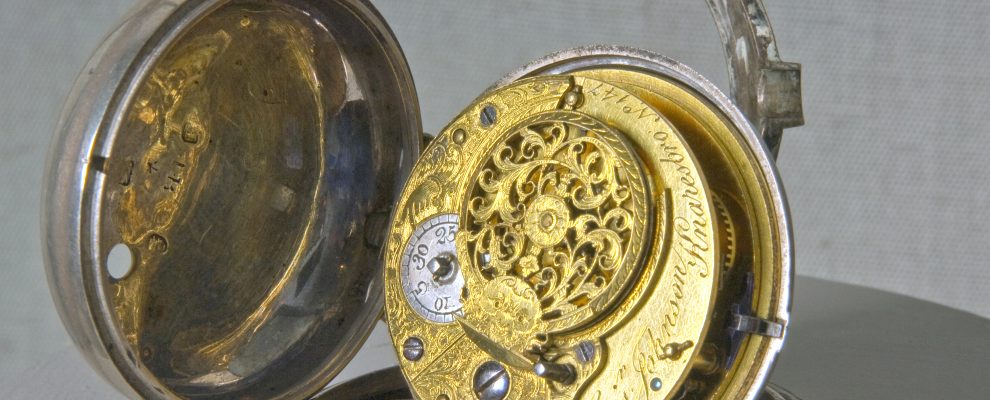Today we carry time with us everywhere. Until recently the wristwatch was the favoured personal timepiece, but increasingly new technological developments, phones and tablet computers in particular, are seeing the watch decline in popularity among many people.
The first watches to be made were precious objects: rare, highly valuable, signalling wealth and status. Indeed in the early days of mechanical timekeeping, making time portable in the form of a watch was an achievement that provoked astonishment and wonder. The earliest reference to a pocket watch is in a letter of November 1462 from the Italian clockmaker Bartholomew Manfredi to Federico Gonzaga, Marquis of Mantua, in which he offers him a ‘pocket clock’ better than that belonging to the Duke of Modena.
Sixteenth-century Europe saw the appearance of the first ‘wearable’ timepieces, known as clock-watches. These were heavy cylindrical brass boxes several inches in diameter, engraved and ornamented, which were fastened to clothing or worn on a chain around the neck. Such early watches had only an hour hand, and the face was not covered with glass but usually had a hinged brass cover, often decoratively pierced with grillwork so the time could be read without opening. Styles changed in the seventeenth century and men began to wear watches in pockets instead of as pendants. This development is said to have been inspired around 1675 when Charles II of England introduced the waistcoat. To fit in pockets the shape of watches changed, evolving into the typical pocket watch shape, rounded and flattened with no sharp edges.
During the seventeenth century pocket watch manufacture became established throughout Europe, but not until the second half of the eighteenth century did watches become anything other than expensive luxurious objects for the very wealthy. However, by the end of the century, watches – while still largely hand-made – were being produced in much larger numbers, and were also increasingly reliable and accurate. First the cylinder escapement, and then the lever escapement were applied to watch production with the result that by 1800 a domestic watch could keep time to within a minute a day.
Many clockmakers ventured into the provision of watches to meet the increasing demand for portable timekeeping from among their established clientele. However, most such makers, even though generally styled as clock and watch makers, would not actually produce the watches themselves. The more usual practice was for the clockmaker to buy watch components ready-made from London and then have a hand in some aspects of the final assembly – or do no more than have their own name engraved on the backplate!
(From Keeping Time a temporary exhibition at Fairfax House, 5th October-31st December 2012)

Name: Hannah Phillip
Title: Director
Source: Keeping Time (Fairfax House, 2012)
